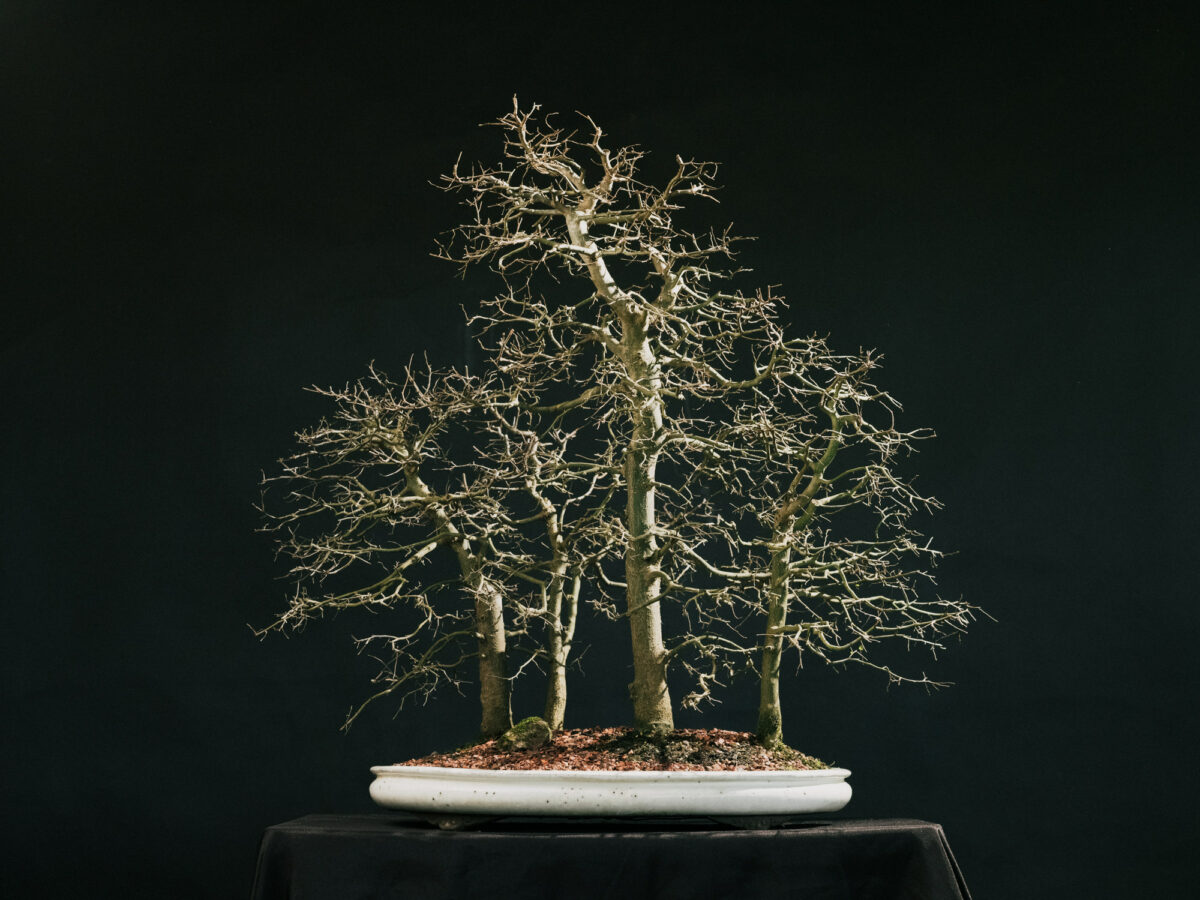Common Name: Sugarberry or Sugar Hackberry
Scientific Name: Celtis laevigata
Characteristics
- Bark – light tan or gray / warty / wrinkly
- Branches – brittle / hard angles with age / lofty / cantilever
- Leaves – alternate / ovate /simple /medium to dark green / can produce fall color
- Flowers – small clusters / greenish white
- Fruit – round berry / reddish purple / edible
Growing Conditions
- Air – good air circulation / humid environment
- Sun – morning to midday sun is best / partial shade / good sun promotes smaller leaves
- Water – moist not wet - dry down not dry out / morning to midday is best / new leaves increase transpiration
Maintenance
- Roots – Repotting should be done during dormancy / leafless period. Typically, before night temperatures are consistently above 55 degrees. Well-draining soil. Protect from afternoon sun for 2 weeks after root pruning.
- Trunk – Properly clean and protect large cuts from moisture as cuts can be slow and/or difficult to heal. Watch for wire scarring. Healthy trees can be heavily reduced during the dormant period.
- Branches – Branches become more brittle and difficult to bend with age. Use wire to set initial primary and/or secondary branch structure where applicable. Watch for wire scarring. The clip-n-grow technique is well utilized. Properly clean and protect large cuts from moisture. Healthy trees can be heavily pruned during dormancy or lightly pruned during the growing season. Protect from afternoon sun for 2 weeks after heavy branch pruning.
- Leaves / Flowers – Leaf size can be controlled by root maturation and pinching new leaf tips. Defoliation is not necessary or advised. Partial defoliation during the growing season can increase airflow, visual design, and reduce predatory insects and fungus. Watch for insects or fungus on new stem growth or under leaves.
Hardiness: temperate / zone 5 – 10 / protect above 90 degrees
Propagation: Air-layers do well. Can be produced by seed. Night temperatures must be consistently over 60 degrees for best results.
Potential Issues
- Insects – aphids / scale / mites
- Fungus – sooty mold on leaves and branches caused by aphids / powdery mildew / leaf spot / root fungus can occur because of poor soil or drainage
*NOTES – Outside Only. Florida native. The Sugarberry / Sugar Hackberry should not be confused with another Florida native, the Common Hackberry – Celtis occidentalis.



